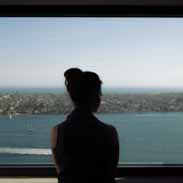The Presidency: The Executive Office of the President – Flashcards
Unlock all answers in this set
Unlock answersquestion
What is the Executive Office of the President (EXOP)?
answer
An umbrella term for an organisation that consists of top presidential staff agencies that provide help, advice, coordination and administrative support for the president.
question
How and why was EXOP created?
answer
Created in 1939, after the Brownlow Committee reported that, "the president needs help", EXOP has grown to include around a dozen or so offices. The most important ones are: 1) the White House Office (WHO). 2) the National Security Council (NSC). 3) the Office of Management and Budget (OMB). Why did presidents from the mid-twentieth century 'need help' in running the federal government? The main reason was the huge increase in the size and scale of the federal government caused by nineteenth-century westward expansion and industrialisation. This was then added to by two subsidiary reasons: 1) The 'New Deal' programme introduced by FDR to help cure the effects of the Depression. 2) The USA's newly found role as a world power.
question
What are the functions of the White House Office?
answer
The principal function of those who work in the WHO is to provide advice and administrative support for the president on a daily basis. This will involve: 1) Policy advice, 2) Personnel management. 3) Crisis management. 4) Liaison with the federal bureaucracy. 5) Liaison with Congress. 6) Running the White House. 7) Deciding and executing the president's daily schedule. 8) Acting as 'lightning conductors' for the president. 9) Ensuring an orderly decision-making process for the president.
question
Who belongs to the White House Office, and what is required of them?
answer
The WHO includes the president's most trusted and closest aides and advisors, such as the Press Secretary, Chief of Staff and Assistant to the President for Legislative Affairs. Members of the White House staff are meant to act not as policy-makers, but as 'honest brokers'. They are not meant to be always in the media spotlight, but to have something of a passion for anonymity. As then Chief of Staff Dick Cheney stated of his relationship with President Ford: "He takes the credit, I take the blame".
question
Which role is the most important in the White House Office?
answer
The role of the White House Chief of Staff is the most critical. Some (such as 'Mack' McLarty, 1993-1994) have been overwhelmed by the job, possibly because of their own Washington inexperience. Others (such as John H. Sununu, 1989-1992) became far too obtrusive and wanted to become a kind of 'deputy president'. The best model is that of the 'honest broker', 'salesman' and 'javelin catcher' for the president, played well by such people as Leon Panetta (Bill Clinton) and Andrew Card (George W. Bush)
question
What is the National Security Council?
answer
Created in 1947, the NSC was established to help the president coordinate foreign and defence policy. Headed by the National Security Advisor (NSA), the NSC began life as an in-house think-tank for the president. The NSC would gather information, advice and policy options from groups such as: 1) the State Department. 2) the Defense Department (sometimes referred to as the Pentagon). 3) the Central Intelligence Agency (CIA). 4) relevant congressional committees (such as the Senate Foreign Relations Committee). 5) the Joint Chiefs of Staff. The NSC would then act as an 'honest broker' and policy coordinator to present carefully argued options ready for presidential decision making.
question
How has the role of the National Security Advisor changed since its creation?
answer
President Nixon greatly increased the role of the NSA when he appointed Henry Kissinger to the post. Kissinger became a roving foreign policy-maker for the president, largely cutting out the State Department and other agencies, becoming a policy player rather than a mere facilitator. But this new enhanced role for the NSA caused grave problems for both Presidents Carter (over the Iranian hostage crisis) and Reagan (over the Iran-Contra affair). Subsequent NSAs, such as Brent Scowcroft (George H. W. Bush), Sandy Berger (Bill Clinton) and Condoleezza Rice (George W. Bush), have reverted to the more traditional role.
question
What is the Office of Management and Budget?
answer
President Nixon created the OMB in 1970 when he revamped the then Bureau of the Budget. The two principal functions of the OMB are: 1) to advise the president on the allocation of federal funds in the annual budget. 2) to oversee the spending of all federal government departments and agencies. It is headed by the OMB director, just about the only EXOP post that requires Senate confirmation. Some former OMB directors, such as Leon Panetta for Bill Clinton (1993-1994), have proved first-class help and advice for the president on financial and budget matters. Others have proved politically embarrassing (Reagan's David Stockman) or have led the president down disastrous paths (George H. W. Bush's Richard Darman, who in 1990 advised the president that breaking his 'no new taxes' pledge would not be politically costly in his re-election bid in 2 years' time).



